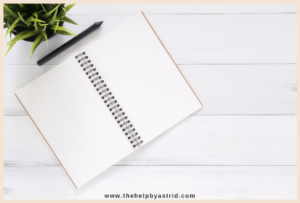
It’s October. We’re in the last quarter of the year and the holidays are coming up. A lot of us feel that the majority of the year has passed us by, and we have nothing to show for it. If you’re like me, most of your year has been spent in lockdown which kind of limits growth and experiences in a big way. We’ve all cycled through cabin fever and back again with the help of Netflix, sourdough starters, new plant acquisitions, and heavy podcast consumption.
At the rate we’re going, I think we could all agree that life isn’t going to go back to “normal” at the stroke of 12 MN on January 1, 2021. We’ve come to accept the reality that this is how “normal” is going to look like from here onward. But it’s not a bad thing to strive for a bit of order amidst this chaos, right? Besides, the year is almost up. And if 2021 is anything like 2020, we better be ready for the surprises in store for next year. It’s better to be prepared. So here are 2 good plans to have…you know, just in case.
Personal Growth Plan
Set goals for the next year and really think about what you want to achieve in life. What skills do you want to learn or improve? How can you make your life better? Once you have listed them down, assign time frames to them. For example, you can set monthly goals, with 1 to 2 goals per month. This works well for learning goals or health goals. If your goals are more long-term and would take more than a month to achieve, you can assign them as quarterly, 6 mos, 1 year, 5 years, or 10-year goals. After assigning time frames, you should list down your action plans. For example, if your goal is to gradually switch to a plant-based diet, your steps can be:
- Make most meals meatless
- Look for meat substitutes
Setting time frames and action plans to your goals is the power move that jumpstarts your dreams into action.
Emergency Plan
This year is proof that everyone should always have personal disaster management or risk reduction plan. In Japan (where they regularly experience earthquakes) all children have GO bags near the designated exits. We should all take stock of their example. At the very least, you should prepare a bag that has food, water, and supplies to last for several days. As per the recommendation of Red Cross, these are the 15 items to include in your basic emergency kit:
- Water: one gallon per person, per day (3-day supply for evacuation, 2-week supply for home)
- Food: non-perishable, easy-to-prepare items (3-day supply for evacuation, 2-week supply for home)
- Flashlight
- Battery-powered or hand-crank radio (NOAA Weather Radio, if possible)
- Extra batteries (Similar item available in the Red Cross Store)
- Deluxe family first aid kit
- Medications (7-day supply) and medical items
- Multi-purpose tool
- Sanitation and personal hygiene items
- Copies of personal documents (medication list and pertinent medical information, proof of address, deed/lease to home, passports, birth certificates, insurance policies)
- Cell phone with chargers (Similar item available in the Red Cross Store)
- Family and emergency contact information
- Extra cash
- Emergency blanket
- Map(s) of the area
How do you disaster-proof your life? Share your tips with us in the comments. Remember to work smart and be a blessing to someone today. Stay safe and healthy!
Written by Jaie O. TheHelp